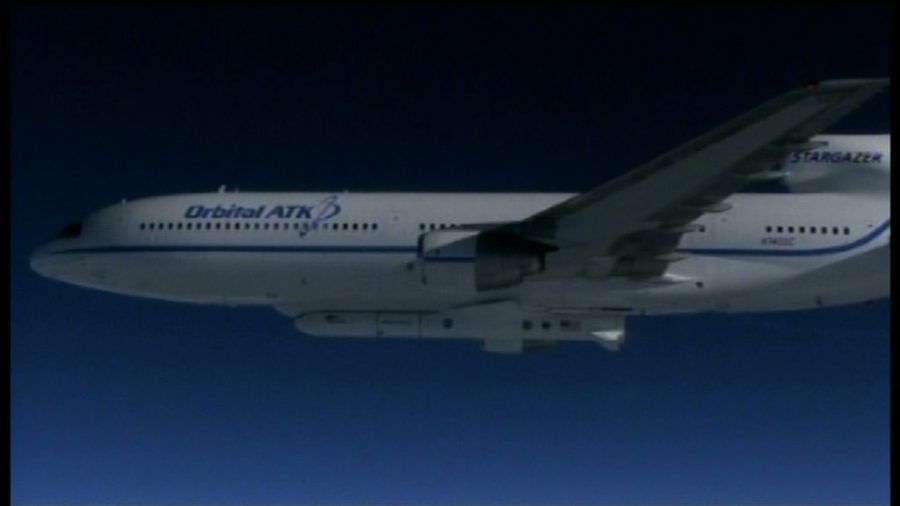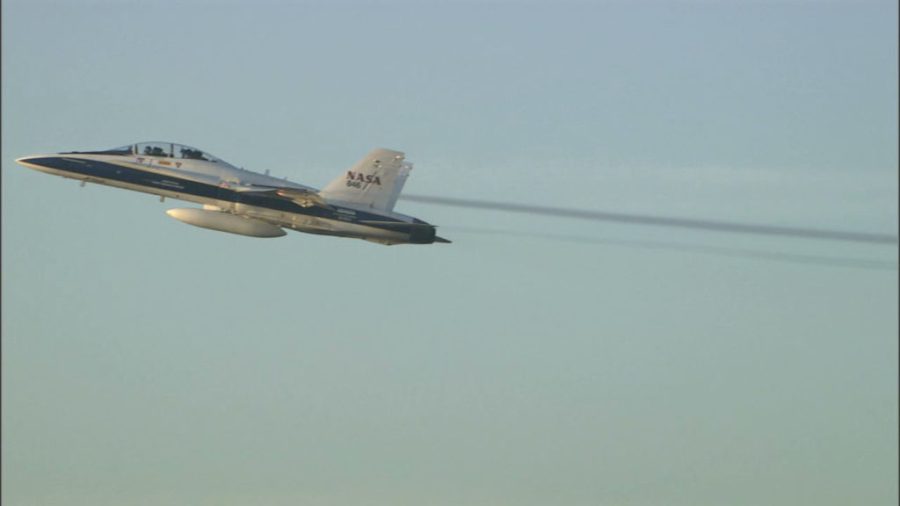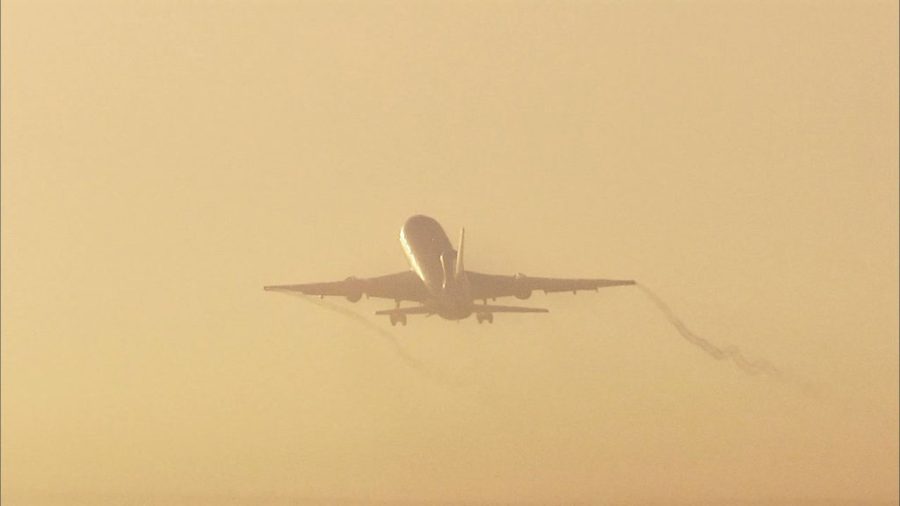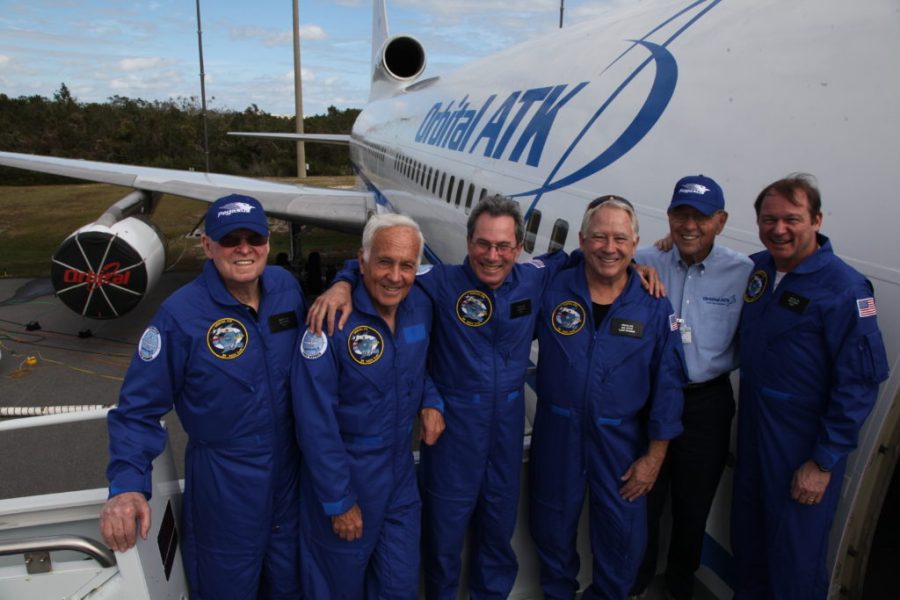Should a second launch attempt be approved for today, the drop time would be 9:05 a.m. EST for release and launch of the Pegasus XL rocket carrying NASA's CYGNSS spacecraft.
Should a second launch attempt be approved for today, the drop time would be 9:05 a.m. EST for release and launch of the Pegasus XL rocket carrying NASA's CYGNSS spacecraft.
Due to a hydraulic pump problem aboard the L-1011 Stargazer aircraft and weather concerns at the drop point, the 8:40 a.m. launch attempt will be bypassed and the team will determine whether a second attempt is possible during today's launch window. Pilots aboard the aircraft have been directed to recycle for a possible second attempt.

The L-1011 "Stargazer" aircraft carrying the Pegasus XL rocket continues its climb as it flies through a "racetrack pattern" that will ultimately put the vehicle on the path to the drop point. Launch remains scheduled for 8:40 a.m. EST.

The L-1011 aircraft with the Pegasus XL rocket mounted beneath are clearly visible in this image taken from the chase plane. Credit: NASA TV In this image taken by a camera mounted to the underside of the L-1011 aircraft, the F-18 chase plane is visible below the Pegasus XL rocket. Credit: NASA TV
Launch Weather Officer Mike Rehbein reports the range currently is "no go" due to violation of the anvil cloud constraint. However, he expects that to clear within ten minutes of the 8:40 a.m. EST launch time, so the Stargazer will continue on its planned flight path for now.

The NASA F-18 Hornet chase plane has departed from the Skid Strip at Cape Canaveral Air Force Station in Florida. Video provided by the chase plane will capture the deployment and first few minutes of the Pegasus XL rocket's flight.

The Orbital ATK "Stargazer" L-1011 aircraft has taken off from the Skid Strip at Cape Canaveral Air Force Station in Florida. Attached to its underside is the company's Pegasus XL rocket containing the eight CYGNSS microsatellites. Launch remains scheduled for 8:40 a.m. EST. From now until then, the crew aboard the L-1011 will work through …
The Orbital ATK Stargazer L-1011 aircraft carrying the Pegasus XL rocket and NASA's CYGNSS spacecraft has been cleared for takeoff at 7:37 a.m. EST. Launch time is targeted for 8:40 a.m. Stand by for takeoff.

The Stargazer aircraft has moved into position end of the Skid Strip runway 13 at Cape Canaveral Air Force Station in Florida.

Here are the pilots and flight engineers charged with delivering the Orbital ATK Pegasus XL rocket to its drop point 39,000 feet above the Atlantic Ocean. From left to right are pilots Ebb Harris and Bob Gordon, chief pilot Don Walter, flight engineer Bob Taylor, ret. Chief pilot Bill Weaver, and flight engineer Mark Kenny.